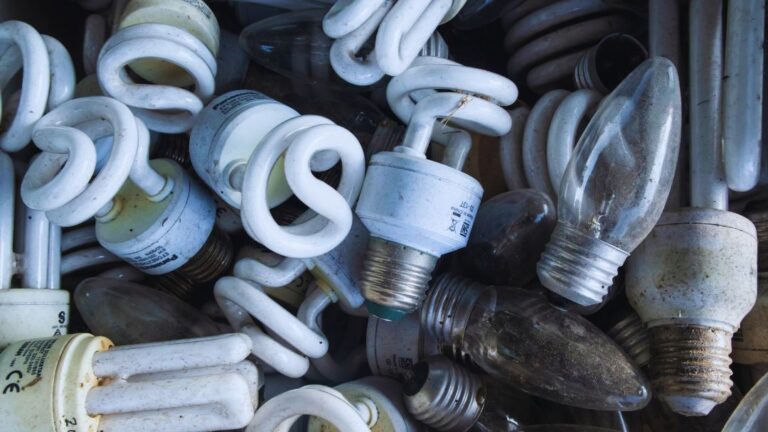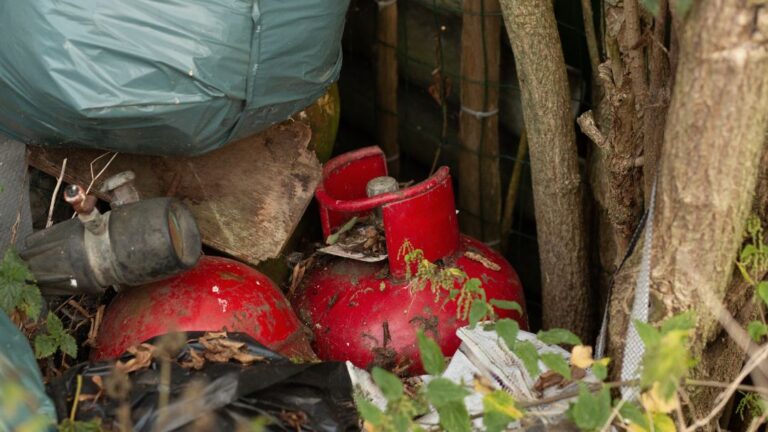Are you facing challenges with unpleasant odors coming from your business’s waste management areas? Or are those smells causing problems with your neighbors or leading to complaints?
For facility managers, operations directors, and environmental health officers, controlling waste smells it’s about compliance, comfort, safety, and maintaining good community relations.
A carbon filtration system uses activated carbon to capture and hold odor‑causing molecules right where the waste is, stopping those smells from spreading into the air outside. This helps manage the tough challenge of dealing with waste smells effectively.
In this article, you’ll learn what a carbon filtration system is, how it works and how it helps you meet health and safety regulations for a fresher, more compliant facility.
Why Are Waste Odors a Problem for Your Business?
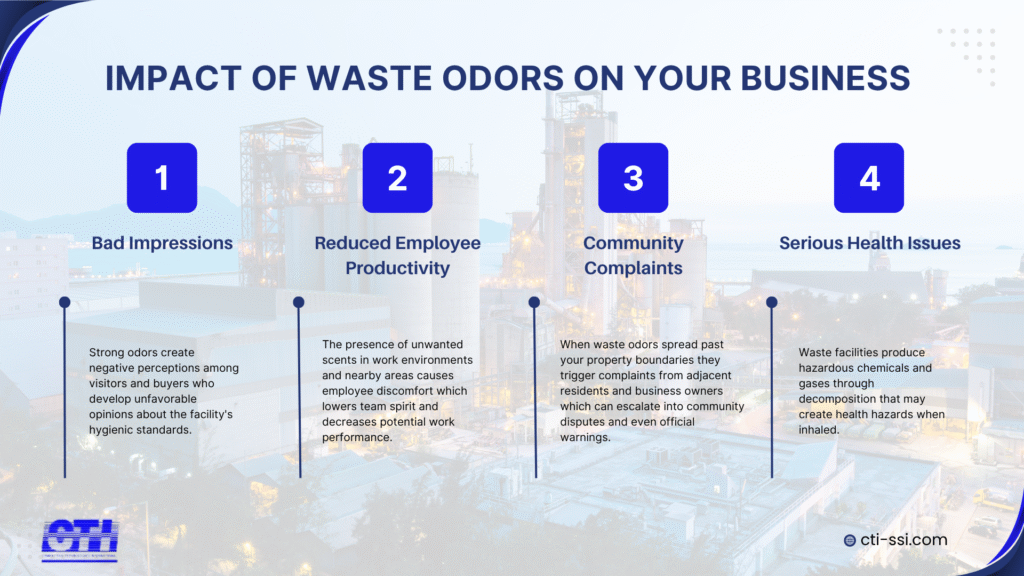
Bad smells from waste can cause several negative effects on how your business runs. They can change how people outside your company and your own employees see your facility.
The management of waste odor remains crucial for your business because negligence will damage its reputation while reducing staff satisfaction and decreasing operational efficiency which results in financial losses.
Waste odors create four main difficulties that affect your business:
- Bad Impressions: Strong odors create negative perceptions among visitors and buyers who develop unfavorable opinions about the facility’s hygienic standards.
- Reduced Employee Comfort & Productivity: The presence of unwanted scents in work environments and nearby areas causes employee discomfort which lowers team spirit and decreases potential work performance.
- Community Complaints: When waste odors spread past your property boundaries they trigger complaints from adjacent residents and business owners which can escalate into community disputes and even official warnings.
- Serious Health Issues: Waste facilities produce hazardous chemicals and gases through decomposition that may create health hazards when inhaled.
To understand the best ways to handle waste that is liquid, check out our article about liquid waste disposal.
What Is a Carbon Filtration System?
A carbon filtration system is an air cleaner that eliminates bad smells and dangerous gases from the environment. The particles contain numerous small holes which function to capture airborne odor molecules and various chemicals.
The typical system location exists in waste-producing areas because it filters air to create acceptable conditions for people living nearby.
How Does This Filtration System Work?
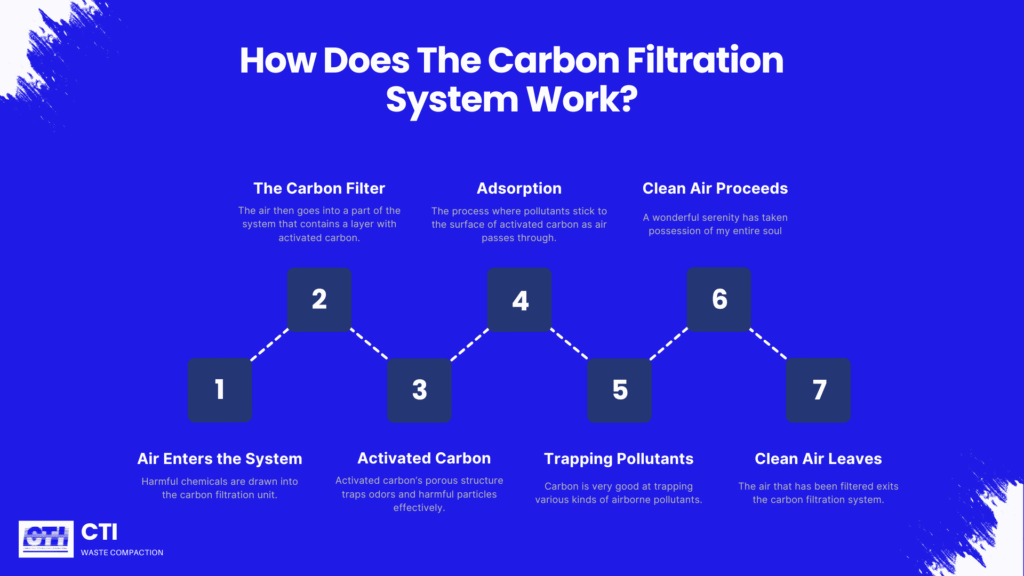
- Air Enters the System: Polluted air full of bad odors and potentially harmful chemicals is drawn into the carbon filtration unit.
- The Carbon Filter: The air then goes into a part of the system that contains a layer or bed filled with activated carbon.
- Activated Carbon – Cleaning Power: This special carbon is made to be very porous. It has countless tiny holes and tunnels throughout its structure. These microscopic spaces give the carbon a massive internal surface area where bad things from the air can stick.
- Adsorption: As the air with odors, particles, chemicals, and gases floats through the activated carbon, these unwanted substances are attracted to and stick firmly to the inner surface of the many tiny pores.
This process, where the pollutants are captured and held on the carbon surface, is called adsorption.
- Trapping Different Pollutants: Carbon is very good at trapping various kinds of airborne pollutants. This includes not only bad smells but also several types of organic compounds (chemicals that easily turn into gas) and other chemical vapors.
- Clean Air Now Proceeds: The air, now missing many of the odors and harmful substances that were trapped by the carbon, continues its path through the filter.
- Clean Air Leaves: The air that has been filtered exits the carbon filtration system. It is much cleaner, smells fresher, and has significantly fewer odors than the air that originally entered.
Benefits of Using a Carbon Filtration System for Waste Odor Control
| Benefits | Explanations |
| Maximum Odor Removal | Eliminates both tiny particles and chemical substances that cause unpleasant smells. |
| Complete Air Purification | Activated carbon captures smell-producing particles through adsorption, not just masking odors. |
| Improved Air Quality Standards | Enhances the overall air quality within and around the facility. |
| Increased Workplace Safety | Removes hazardous airborne substances, making the environment safer for employees and nearby communities. |
| Better Employee Comfort & Morale | Fresh and odorless workspaces improve comfort and create a more pleasant working environment. |
| Regulatory Compliance | Helps ensure adherence to environmental regulations, potentially avoiding fines. |
| Demonstration of Responsibility | Shows your business is committed to sustainable and responsible waste management practices. |
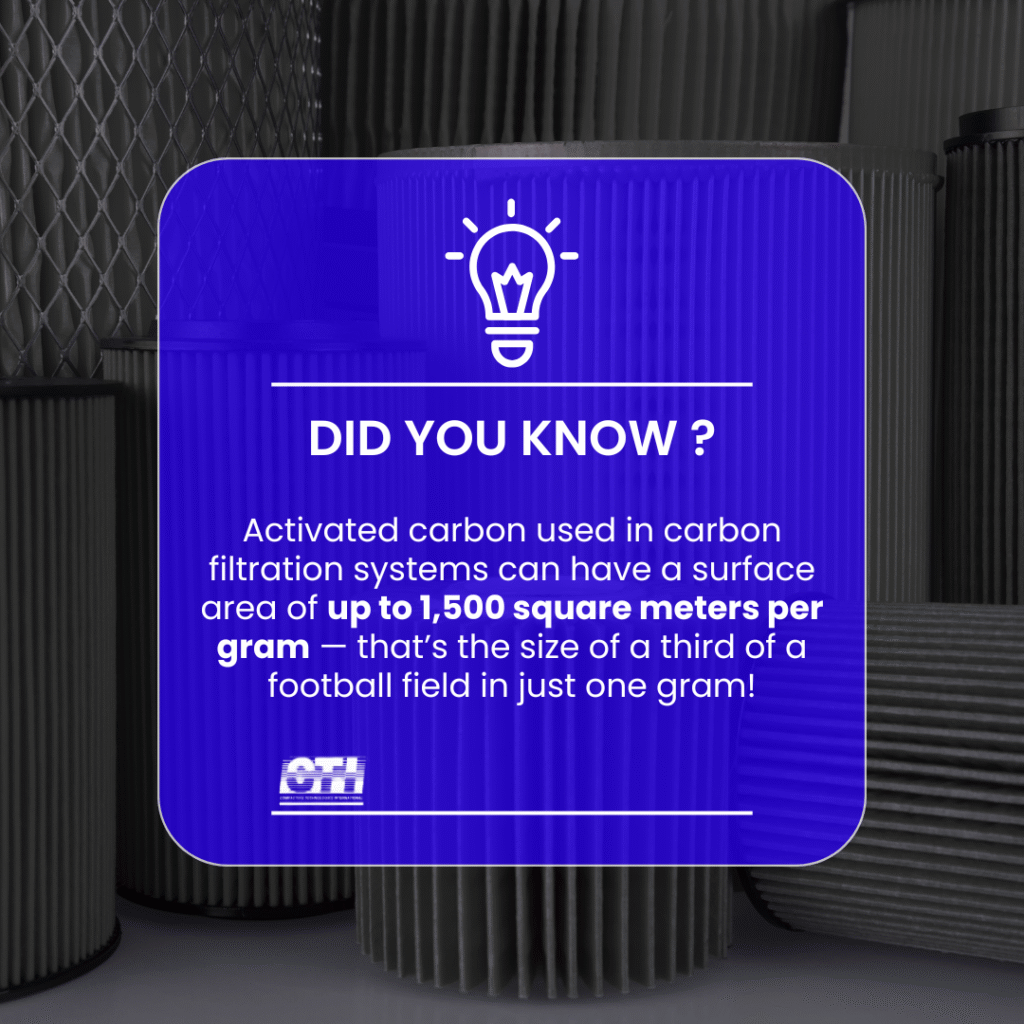
The Impact of Waste Odors: Looking at the Numbers
Studies and environmental organizations report clear evidence that waste odors represent more than just a minor nuisance to people. People frequently contact environmental protection agencies to report bad smells as their primary environmental concern.
Reports show that complaints about smell and noise often make up a very large part of all environmental complaints that these groups receive.
In some cases, they account for as high as 90 percent of all complaints received in a year (Source: EPA News Release – Odour and Noise Complaints…).
When your business receives official complaints from people who live near your facility they experience operational disruptions. Proper odor management serves as the essential solution to prevent these problems while maintaining positive relations with neighboring residents.
To learn more about handling common waste streams safely, you might find our article on non hazardous waste particularly useful.
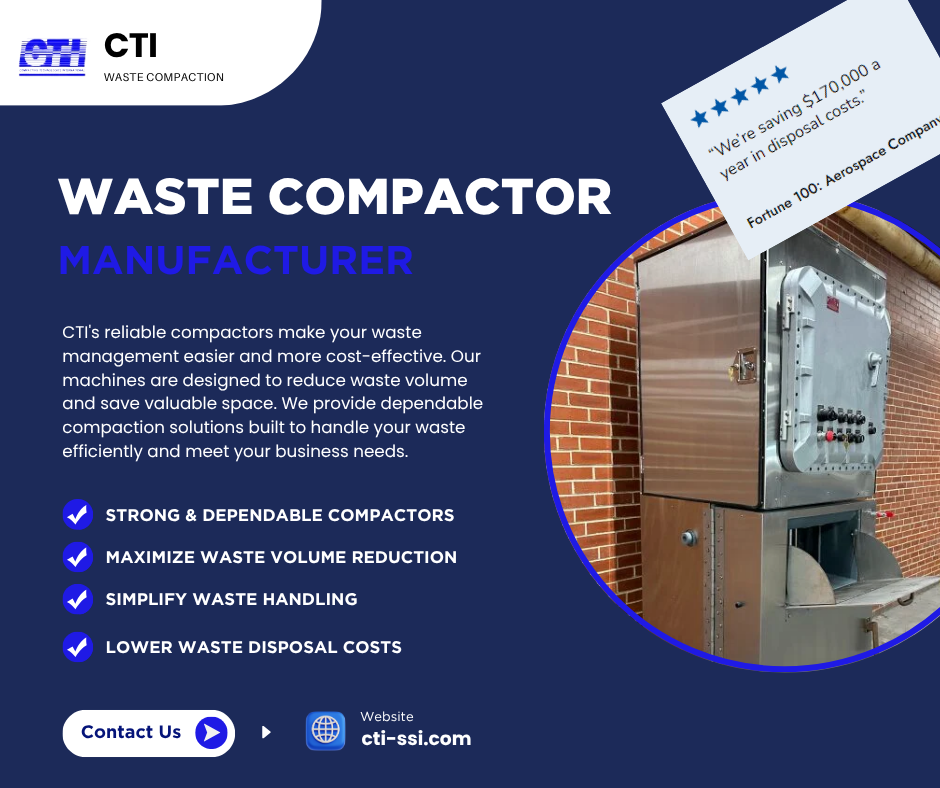
Conclusion: Achieving Cleaner Waste Management
In this article, we’ve learned that a carbon filtration system is a powerful tool for dealing with unpleasant waste odors and harmful gases.
These systems effectively capture and trap the smell-causing particles and chemicals through a process called adsorption by using activated carbon material that contains numerous tiny pores.
The management of waste odors stands as a vital priority for various factors that include employee health and community relations as well as regulatory compliance standards.
The implementation of a carbon filtration system delivers actual advantages which include substantial odor reduction together with enhanced air quality and facility hygiene and better community relations.
CTI has been rated as the top #1 company that produces waste compactors which offer strong and dependable performance to simplify waste handling operations while lowering operational costs. If you want to learn how combining strong waste compactors with carbon filtration systems can achieve cleaner, more compliant waste management for your business, book a free 30-minute consultation with our CTI experts.


